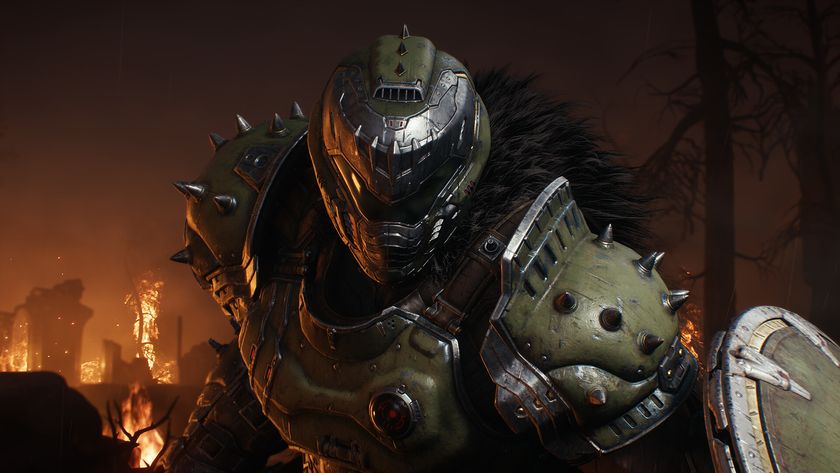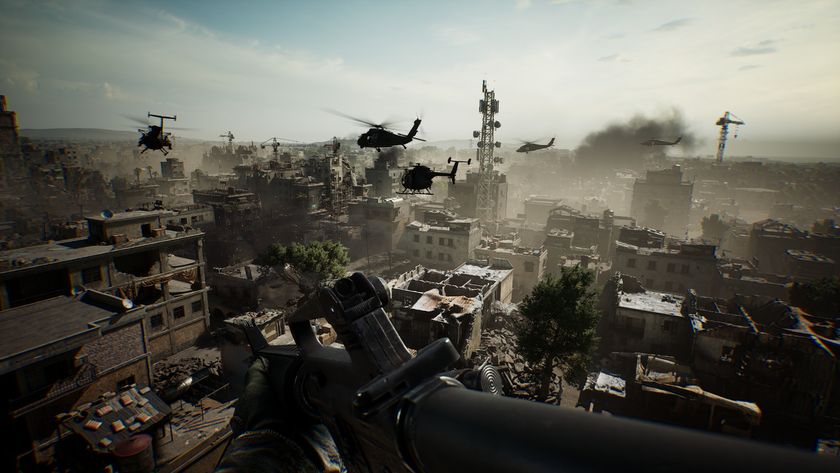Strafe is a ludicrously fast, deceptively clever FPS that wants to be the pizza of video games
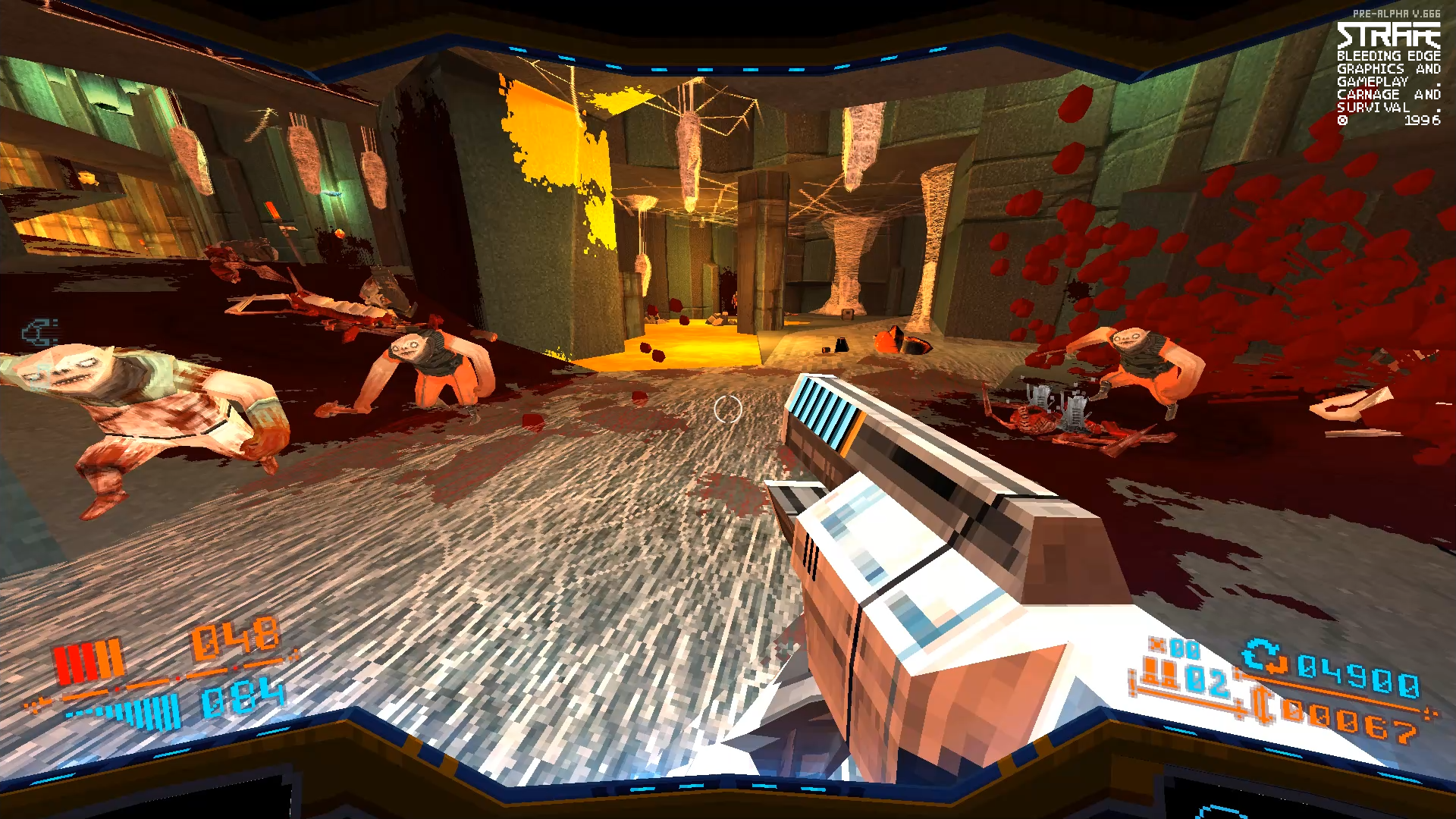
Picking up the Strafe demo last fall, the Quake-inspired, roguelike FPS immediately did exactly what I hoped it would, ie. delivering an instantly gratifying, kinetic killing spree with a fastness and fury to make Vin Diesel look like a slow and entirely placid sloth. Low-polygon horrors swarmed at me, demanding torrents of hot lead. Bullets rattled and fuzzy explosions painted the tight, labyrinthine corridors red, as said beasties were churned and shredded by my mighty death-engine of flowing circle-strafes and hurtling, overhead bounds. It was a gloriously giddy – and tightly-honed – festival of crowd-control slaughter, and it made me very happy indeed. If Strafe’s roguelike, rinse-and-repeat structure was going to deliver an infinite Quake generator of that deliciously brutal calibre, then I was all-in.
Now though, having had a more detailed look at the shape of the game built around that carnage, I find myself even more excited. Because while developer Pixel Titans does indeed look to be building some great material around that razor-sharp carnage, it’s the specific mindset the studio is taking that really impresses.
In broad terms, there are two ways of adding longevity to a game. With the first, you simply add more ‘stuff’, packing out your game with missions, side-quests, collectibles, and all manner of other, variably meaty things to do. In this style of game, an Assassin’s Creed or Grand Theft Auto, the core systems are largely there to support the doing of these things. With the other approach – typified by the likes of Doom, Street Fighter, Titanfall, and Halo - you focus on systems first, creating a set of actions that are consistently gratifying in themselves, but malleable and adaptable enough to be reworked and reshaped through different modes and situational demands. Then you build content that repeatedly finds new ways of using them. That latter approach is consciously being taken with Strafe, and it couldn’t be a more fitting – or promising – way of tackling a roguelike.
It’s promising because it means that Strafe isn’t relying on the slightly artificial compulsion of the roguelike gameplay loop in order to remain fun. ‘Shoot, die, try to do a bit better next time’ hits the same one-more-go factor as a slot machine, but on its own that’s as fake an addiction as the arbitrary levelling system in a bad mobile game. Rather than settling for that, Strafe seems to be aiming for Destiny’s sweet-spot of delivering an expansive suite of activities that always ensure a showcase for the shooting’s base-level quality at their core.
Deliberately aping Bungie’s “30 seconds of fun” design mantra from Halo, it’s a game that wants to lock down a consistently enjoyable gameplay experience, and then bend it in every which way in order to keep it fresh. The idea is, as game director Thom Glunt tells me, to create “the pizza of video games”. Pizza is always good, no matter how much pizza you’ve eaten recently, or over the course of your whole life thus far. Its basic essence is so good that you can always, always eat more pizza.
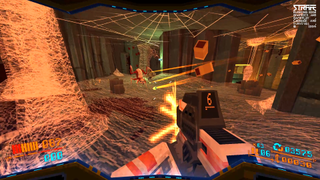
The exact nature of this stuffed-crust slaughter simulator? An extreme attention to granularity in the game’s randomly generated levels, balanced against a careful desire for depth and a rewarding sense of progression, despite the many, many restarts incoming. And a ton of genuinely interesting secrets. Oh, and a mode called Murder Zone.
The rough structure of Strafe takes you through four themed zones, comprising four dynamically generated levels each, but rather than the usual, predictable, repeated modules that tend to come with a roguelike, Strafe’s environments have an immense intricacy in their possible formulations. Each zone has 50 ‘modules’ but each of these level-design building bricks has a ton of variables in itself. Walls can become doors can become staircases can become pretty much anything else, leading to a remarkably bespoke, crafted feel and flow to every level I’ve seen and played so far. Obviously, this is great for the iterative replay Strafe is built around – you might think you recognise a room from time to time, only to find its whole feel and gameplay purpose entirely different – but it’s also instrumental in kneading and reshaping that pizza dough with wild abandon.
Sign up to the 12DOVE Newsletter
Weekly digests, tales from the communities you love, and more
Not that Strafe relies on its shifting level design alone. On a more intimate level, its gameplay mechanics deliver a deceptively progressive sandbox of systems, tools, and toys. You’ll level up three main, persistent guns as you make repeat attempts at Strafe’s campaign, though a stack more, expendable, and ludicrously over-powered pick-up weapons will drop on the fly, to be used in the moment or saved for more strategic situation later. Between these, and Strafe’s eminently physics-driven traversal (rocket-jumps and plasma-assisted wall-runs abound, in accordance with The Old Ways) that’s an extra-thick layer of mechanical marinara to play with. But the gameplay base goes even deeper.
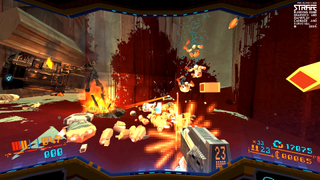
A merchant sells a total of 20 support items, and only five of these are expendable, single-use affairs, the remaining 15 delivering persistent, gameplay-altering upgrades. With the burnable items covering everything from auto-turrets to ‘aggro-sticks’ – used to draw the enemy into hazards and choke-points for easy execution – and the permanent stuff including the likes of a double-jump by way of a downward shotgun blast, it becomes rapidly, tantalisingly apparent just how many flavours the evolving, systemic toolbox of Strafe’s combat will include.
Speaking of systemic, Strafe also has a really nice – by which I mean ‘triumphantly grotesque’ – way of bleeding dynamic, gameplay-driven happenings into the wider scope of navigation. And by ‘bleeding’, I mean ‘pissing arterial spray at a rate and force that could take an eye out’. Bloody dismemberment is just as much a part of Strafe’s identity as it is of the ‘90s and ‘00s shooters that inspired it, but Strafe puts as much effort into its gore as some games do their entire design. It might look all chunky pixels and boxy globs, but underneath the 1996 aesthetic, there’s a lot of smart stuff going on.
Stuff like stickiness, and gravity, and gibs that burst when you stand on them. And body parts that spurt blood like Catherine Wheels as they whirl through the air. And blood that drops through grates, and blood you can run through to leave footprints. The upshot of all this? You can literally paint the walls with gore, marking rooms with viscera and bloody notations, to act as persistent path-finding tools. Gore isn’t just decoration in Strafe. It’s an important, entirely functional gameplay tool. And that’s before you even get into the business of drenching burst monster corpses with more blood, to dilute the xenomorph-like acid some of them leave lying around.
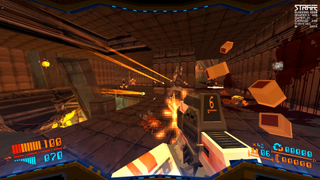
And the invention doesn’t stop where the campaign (eventually) ends. Eager to wring every last bit of versatility out of Strafe’s systems, Pixel Titans is also including the aforementioned Murder Zone, a ten-room Horde-style challenge arena with a persistent progression system, which uses spilt blood as currency for unlocks and upgrades. It looks a tighter, more disciplined spin on Strafe’s shooting, where maximising the slaughter potential of every shot seems a must, with speed and manoeuvrability more vital than ever. And on the even longer-term end of things, there are the weekly speed-run challenges.
Coming as part of a live, constantly updated playlist, these will test your mastery of Strafe’s flexible, old-school traversal techniques, as well as your map knowledge and understanding of secret routes. And like everything in Strafe, they look to be built with immediacy and user-friendliness at the forefront. Rather than booting you back to the menu for a restart after each attempt, these maps loop their layout endlessly, avoiding any irritating break in your re-try momentum, but more importantly, keeping you in the zone and allowing much faster honing of your optimum route.
In all then, Strafe now looks to impress far beyond its (already impressive) core gameplay. In fact it might well turn out to be a greater and more authentic evolution of its inspirations than we thought. After all, what’s the real essence of Quake, Doom, and Unreal is it isn’t clever, refined, design intelligence disguised as a big dumb blood-spree? As for how well Strafe realises its multifarious goals, we’ll find out when it launches on PC and PlayStation 4 on May 9.
Most Popular





